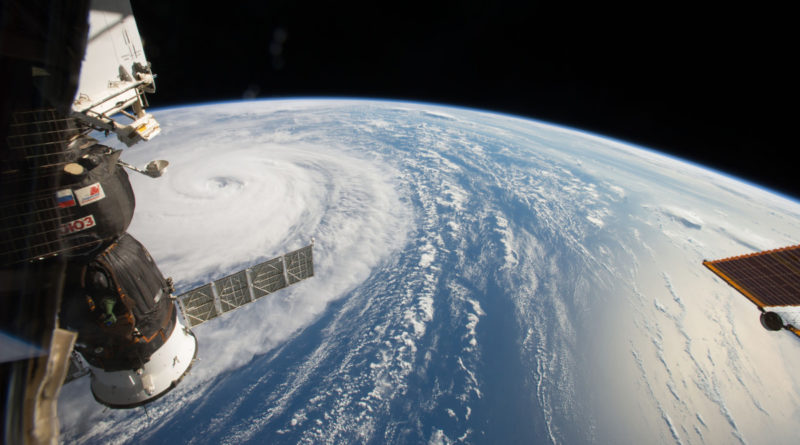FLASHBACK 2020: Looking back on 2020’s most tumultuous weather moments around the globe
.
FROM ASEANEWS.NET:

.
The coronavirus COVID-19 is affecting 218 countries and territories around the world and 2 international conveyances.
.
.
.
Looking back on 2020’s most tumultuous weather moments around the globe
A year that will live in infamy as lives where upheaved in the face of the novel coronavirus pandemic did not spare the globe any blows from devastating bushfires, catastrophic flooding, abnormal heat and record-setting tropical systems.
The calendar turned to January 2020 as bushfires continued to rage across Australia, in a fire season that began in July 2019 and picked up in intensity by the end of the year. Dozens of deaths were blamed on the fires, and thousands of homes were destroyed in a season that lasted until February.
Nearly half a billion native and domestic animals are thought to have been killed by the fires.
.

 |
| This Jan 2, 2020, photo captured by NASA’s Terra satellite and made available by the Moderate Resolution Imaging Spectroradiometer (MODIS), shows thick smoke blanketing southeastern Australia along the border of Victoria and New South Wales. More than 200 fires are burning in Australia’s two most-populous states. Blazes have also been burning in Western Australia, South Australia and Tasmania. (NASA via AP) |
It is estimated that 11,264 bush or grass fires burnt 5.4 million hectares (13 million acres) during that time frame, including the “megafire” that developed when three fires merged near the New South Wales and Victoria border.

Storm Ciara, the strongest storm of the season, swept across the British Isles during the beginning of February, bringing wind gusts of 80-100 mph (129-160 km/h) and locally heavy rainfall.
While planes at the London and Birmingham airports struggled in the strong crosswinds from Ciara, one British Airways flight from JFK International Airport in New York crossed the Atlantic to Heathrow Airport in London on Sunday in record time.
The 2019-2020 windstorm season also brought devastating flooding to communities in southern Wales. A week after Storm Ciara moved through the region, Storm Dennis followed, and widespread flooding developed across Britain.
After more storms followed into the final days of the month, the Met Office confirmed that 2020 had the wettest February on record and the fifth wettest of any month on record.
In the Indian Ocean, tropical activity began to brew during the month of May before the arrival of the southwest monsoon season, spawning the strongest storm of the season and in recent memory.
At its peak strength, Amphan became a super cyclonic storm, the highest level on India’s tropical cyclone scale, and was producing winds around 220 km/h (173 mph). According to AccuWeather Lead International Forecaster Jason Nicholls, Amphan was the first super cyclonic storm in the Bay of Bengal since the 1999 Odisha Cyclone. That cyclone in 1999 produced winds up to 260 km/h (160 mph).
.

 |
| Roadside vendors along a metro station salvage material from his stall after Cyclone Amphan hit the region in Kolkata, India, Thursday, May 21, 2020. A powerful cyclone ripped through densely populated coastal India and Bangladesh, blowing off roofs and whipping up waves that swallowed embankments and bridges and left entire villages without access to fresh water, electricity and communications. (AP Photo/Bikas Das) |
While Amphan may have lost some wind intensity before making landfall, the cyclone still produced flooding rainfall, mudslides and strong winds across the head of the Bay of Bengal. Nearly 100 people died in northeastern India and Bangladesh.
As regions across the globe during the spring months reported below-normal temperatures, Siberia was reporting signs of an early spring and summer.
High temperatures ranging from 25 to 35 C (77 to 95 F) were common across parts of Russia during May, including in Siberia, according to The Sun.
However, temperatures that high are not common for that early in the year for the vast region. Average high temperatures in Siberia, considered one of the coldest regions on Earth, are usually around 17.5 C (63.5 F) for the month of May.
At least one town above the Arctic Circle broke a daily high-temperature record. On May 22, Khatanga recorded a high temperature of 25 C (78 F). The normal high for the date is 0 C (32 F), and the previous record was 12 C (54 F).
Meanwhile, southern portions of the region, nicknamed “Warm Siberia” for its slightly warmer climate compared to northern parts of the region, welcomed the start of June with enough snow to cover roads and impact travel.
During the spring and summer months, an active mei-yu front, or semi-stationary front that brings monsoon rain, also known as “plum rains,” to portions of Asia, led to catastrophic flooding from southern China to southwestern Japan and into the Korean Peninsula.
As of mid-July, over 140 people were reported dead or missing across southern China this year from flooding. Over 30 million people have been impacted across 27 provinces, and about 1.72 million people have been relocated, reported CGTN on Twitter.
The Japan Meteorological Agency issued its highest warnings for flooding and mudslides in Kumamoto and Kagoshima, a first for these prefectures, as the Kuma River burst its banks. The longest spell of monsoon rain in seven years flooded 14,211 acres of South Korea, killing more than 20 people.
The AFP reported that the deaths from lightning in Bihar, India, reached 147 in just 10 days’ time. More than two dozen of these deaths came on just Saturday, July 4.
At least 215 people have been killed so far this year across the state. Nearly all of the deaths have been farmers, rural laborers and cattle graziers.
.

 |
| A flash of lightning lights up a raincloud hovering over a township in Dharmsala, India, Sunday, April 19, 2020. (AP Photo/Ashwini Bhatia) |
India’s monsoon season claims lives every year, and 2020 was no exception. According to The New India Express, 1,503 people died this hear as the result of monsoon rain and flooding.
Along the Pacific Rim, an active tropical season took its toll on areas from Vietnam to Japan and the Korean Peninsula.
After Typhoon Bavi followed a track into the northwestern portion of the Korean Peninsula during late August, two more typhoons made this northerly turn toward the region through early September.
Typhoons Maysak and Haishen were close to follow Bavi, all bringing impacts to the Korean Peninsula. The trio of storms hit the Korean Peninsula within a week’s time.
Haishen was the fifth named tropical system to make landfall in South Korea in 2020. Typhoon Haishen’s landfall in South Korea broke the previous record for the number of named storms to make landfall in a single year.
By October, the storm track in the West Pacific Basin had turned to the south and west, targeting the Philippines and Vietnam with several named tropical systems.
Super Typhoon Goni slammed into the eastern Philippines on the final day of October with maximum sustained winds equivalent to a strong Category 4 hurricane in the Atlantic and East Pacific basins.
Goni is the strongest typhoon to prowl the West Pacific this year and was only the second storm to reach super typhoon status. The first super typhoon was Haishen which was part of the trio of storms to impact southern Japan and the Korean Peninsula from late August into early September.
During this stretch of active weather, a total of nine tropical systems impacted Vietnam from mid-September to mid-November. This led to extreme rainfall and devastating flooding in central parts of the country.
One of the hardest-hit cities was Hue which recorded an incredible 132 inches (3,355 mm) of rain during October and November. Nearly 100 inches (2,540 mm) of this fell in October.
The flooding resulted in more than 100 deaths and destroyed crops across the region.
It was not just the Western Pacific Ocean that spawned devastating tropical cyclones during 2020; the Atlantic Ocean also had a record-breaking hurricane season which included several notable storms.
One of the most destructive storms of the season was Hurricane Eta which made landfall during early November in Nicaragua as a Category 4 hurricane. Eta is only one of five storms of Category 4 strength or greater to make landfall in Nicaragua.
Although making landfall in Nicaragua, Eta’s heaviest rain fell in Honduras where four different locations received over a foot of rain, including two areas that topped 20 inches. No area in all of Central America was hit harder than the coastal town of Tela, which got an estimated 28 inches of precipitation.
.

 |
Nearly 150 deaths were linked to the former Category 4 hurricane, Reuters reported. On top of that, hundreds more were missing or left stranded.
In the United States, 12 named storms have made landfall, breaking the record of nine that had stood since 1916.
“AccuWeather estimates the total damage and economic loss caused by U.S. landfalling named storms in 2020 to be between $60 billion to $65 billion,” said AccuWeather Founder and CEO Dr. Joel N. Myers, who has been studying the economic impact of tropical weather for decades. “AccuWeather’s estimate includes all losses and financial impact to the economy, which are greater than insured losses.”
Tropical activity returned to the Indian Ocean during the month of November, which brought Severe Cyclonic Storm Gati to Somalia and became the first storm with the strength equivalent to a hurricane to make landfall over the East African country.
As reported by Anadolu Agency, Gati kiled nine people and destroyed almost 4,000 buildings. In four of the hardest-hit communities, the storm destroyed 886 properties which amount to more than 75 percent of all privately-owned properties.
In the final days of December, heavy rain and thunderstorms drenched portions of northern Argentina. San Miguel de Tucuman reported 136 mm (5.37 inches) of rainfall in just 24 hours on Dec. 28.
Videos have emerged of downed trees and daring water rescues as floodwaters raced through the streets. There are reports of at least two deaths.
From record-breaking bushfires to flooding and warmth, 2020 will go down in the record books as a year to remember. 2021 will likely bring more notable and significant weather events, and AccuWeather will be there along the way to help people around the globe protect lives and property.

.











